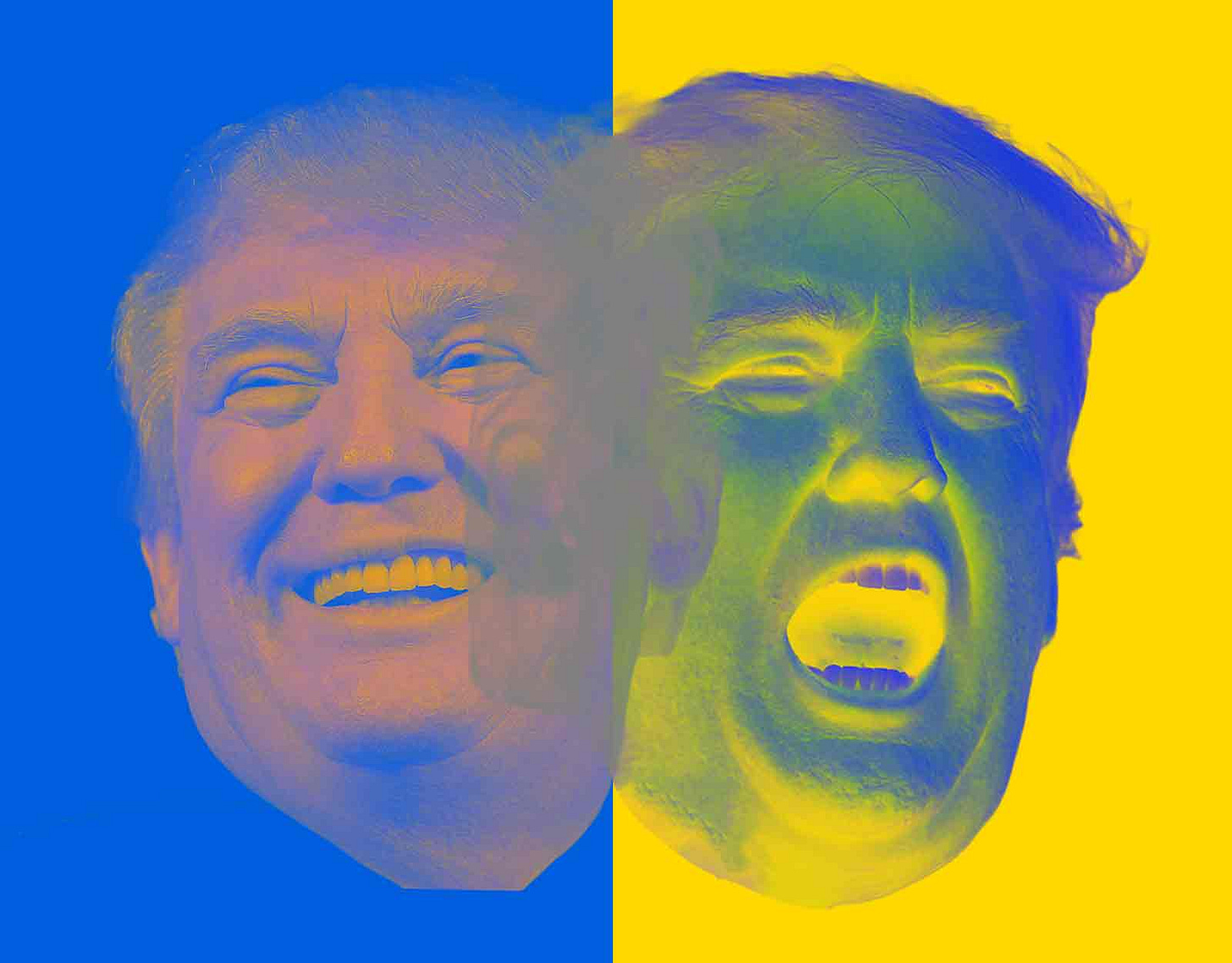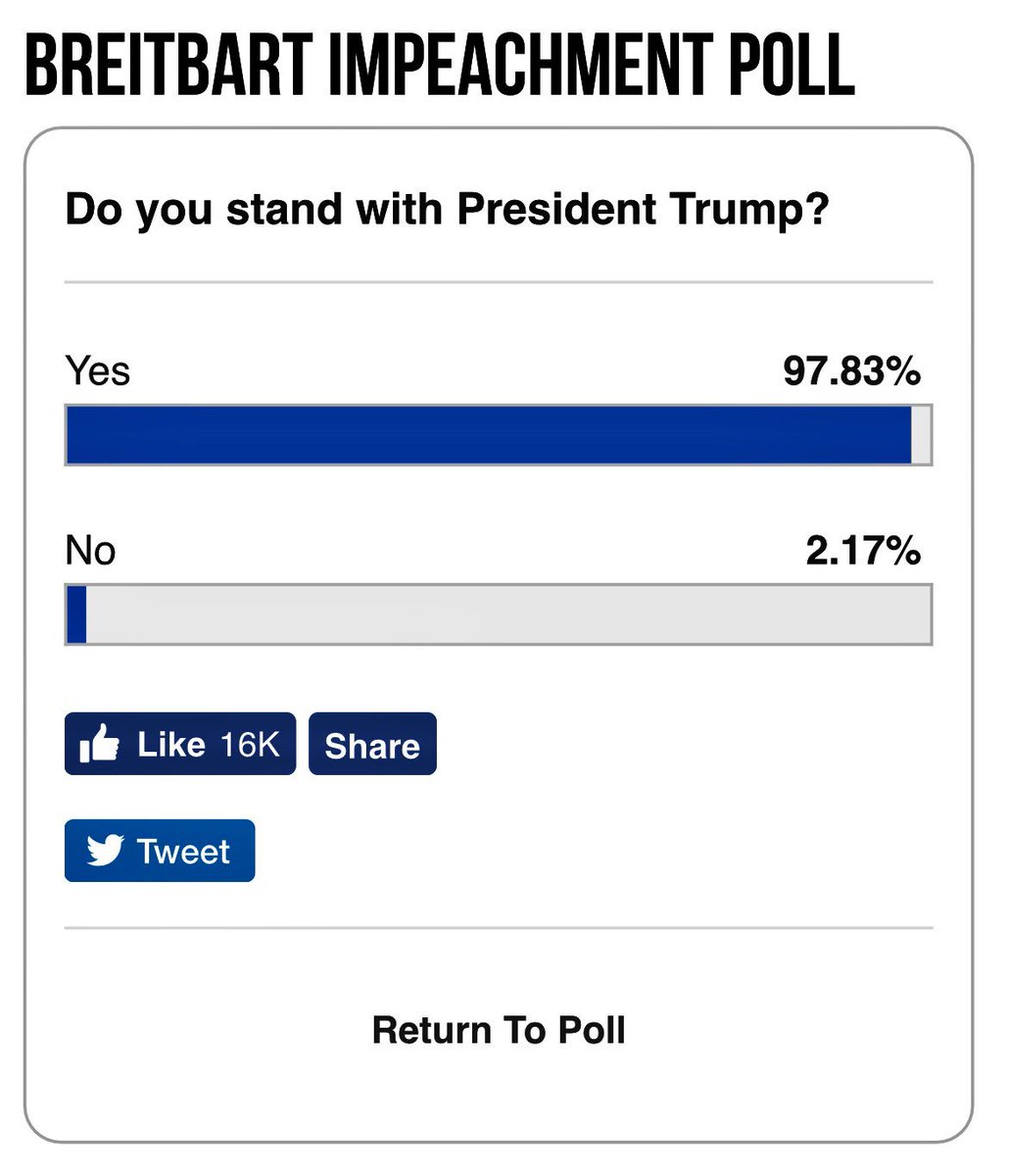Watch How Trump Moves the Goalposts on Ukraine
It has been interesting and instructive to watch the goalposts move on the story of Donald Trump, Ukraine, and impeachment. Interesting because the kind of gaslighting that normally takes place over the course of weeks has occurred over the course of days. Instructive because it shows how few of the defenses of Trump are made in good faith.
The Ukraine story did not emerge as a public concern until late September. The whistleblower complaint was filed to Intelligence Community Inspector General Michael Atkinson on August 12. Congress did not subpoena the whistleblower’s complaint until September 13. By September 18, press reports were suggesting—still only vaguely—that President Trump had made some sort of promise to some foreign leader during a phone call.
On the same day he tweeted that polling shows no support for his impeachment.
Interesting that his mind would go there. Because this was before the public knew anything substantive about his call with Ukranian President Volodymyr Zelensky.
The next day, September 19, Trump called the initial reports about the existence of a whistleblower report a “Fake News story” and asked “is anybody dumb enough to believe that I would say something inappropriate with a foreign leader.”
By September 20, Trump’s story was evolving. He now admitted that the whistleblower report was not fake but was, in fact, real. And he charged that the whistleblower should not be trusted because he/she was “highly partisan.”
The next day, September 21, Trump’s story shifted again. First, he alleged—parroting a Fox News personality—that the whistleblower was actually a secret spy who was not even allowed to be on the call in question.
Then he admitted that the whistleblower report concerned a call with the president of Ukraine. And for the first time, Trump brought up Joe Biden, positing that the real story was about Biden’s corruption.
For good measure, Trump also claimed that the “Fake News Media” “knowingly make up the facts.”
As Trump and his defenders were doing all this positioning and repositioning, news coverage of the Ukraine call was piling up. It was no longer possible to deny the existence of the whistleblower complaint. So Trump adjusted tactics and began attacking its veracity. On September 22, he began arguing that the whistleblower was not to be trusted because he or she did not have “firsthand” information about the Ukraine call:
On September 23, Trump broadened the critique of the report, claiming that not only did the whistleblower lack firsthand information but he/she didn’t “know the correct facts.”
And then, on September 24, Trump’s story evolved again as he insisted that the full, “unredacted transcript of my phone conversation” would show “NO quid pro quo.” Note the progression from this is Fake News to he doesn’t know what I really said to there was no quid pro quo.
Then came a watershed moment: Early on the evening of September 24, Speaker Nancy Pelosi announced the beginning of a formal impeachment inquiry.
Following Pelosi’s press conference, the president went on something of a Twitter drag. He sent out seven tweets pushing clips from Fox News Channel’s primetime shows, all of which suggested—and here I paraphrase—that nothing at all inappropriate had taken place and this was all a TOTAL WITCH HUNT.
At 7:14 the next morning, President Trump paused to give National Review’s Andy McCarthy a plug for his new book.
McCarthy has historically been something of an impeachment enthusiast. In 2014 he wrote a book titled Faithless Execution: Building the Political Case for Obama’s Impeachment. In August 2016 he wrote not one, but two pieces arguing that Congress should impeach Hillary Clinton before she was elected president.
Thus far, McCarthy seems to believe that there are no reasonable grounds upon which to impeach President Trump.
After logrolling McCarthy on September 24, President Trump shifted positions once again, retweeting a claim from @JoeGooding that the Inspector General had determined that the whistleblower “had a political bias.”
This claim is and was entirely untrue. Who is @JoeGooding? His Twitter bio notes that he’s been retweeted by Trump three times and features a permanent link to an anti-vaxxer blog.
So the president’s official line had now transitioned to outright conspiracy theory.
On September 25, in advance of the release of the not-quite-transcript of the Ukraine call, Trump began trying to set expectations, Bill Barr-style, by saying that Democrats would have to apologize once they saw the document.
And then, once the document was in the wild, Trump went back to insisting that, however bad it might look, there was no direct quid pro quo.
You may have forgotten, but on the morning of the document release, Trump’s allies set expectations reasonably high in their insistence that the whistleblower report had dramatically overpromised any wrongdoing by the president. This turned out to be incorrect and most unbiased observers were fairly gobsmacked by what Trump had said.
To take just one example, hours before the document was released, Chris Christie confidently predicted that Trump would be totally in the clear so long as he didn’t say something terribly incriminating, such as “do me a favor.” Which, of course, is almost exactly what Trump said (“I would like you to do us a favor though”).
The end result was that by the next day, September 26, the new line was that Trump had not committed a high crime or misdemeanor.
Over the next two days, Trump went back to some of his previous positions: That the whistleblower report was “inaccurate,” that the account of the call was “completely different and at odds” with the actual conversation, and there may have been a “spy” involved.
On September 28 he brought out a new line of attack: whataboutism.
Indeed, it is difficult to imagine what it would have been like had Republicans been such “do nothings” in regard to Barack Obama that they had, say, refused to vote on a nomination to the Supreme Court. Or try to imagine Republicans being so convinced of Obama’s illegitimacy that certain of them spent eight years obsessing over whether or not his birth certificate was a forgery.
It boggles the mind.
The goalposts moved again on September 29, when radio host Mark Levin appeared on Fox News to debate Ed Henry. The encounter was notable because, as Twitter user @jpsal123 noted, “I like Ed Henry but his question implied that the transcript specifically said ‘dig up dirt.’ That’s the trigger word, ‘dirt.’ It was never said. It’s misleading. You should read the transcript.”
@jpsal123 has only 830 followers, but the president of the United States managed to pluck his post from the ether and retweet him. So the standard was now whether or not the Trump had used the word “dirt.”

Over the course of a couple hours, Trump tweeted about the Levin interview 19 times. And he insisted that evening that “NOTHING that has turned up that is Impeachable.” [sic]
The next day brought another shift. On September 30, Trump claimed that the whistleblower report was illegitimate because some nefarious person had changed the whistleblower rules.
This claim was also untrue.
Later in the day, Trump pivoted to argue that, in fact, nobody really cared about the story. As evidence, he supplied a Breitbart online “poll” claiming that 97.83 percent of respondents “stand with President Trump.”
And on the very next day, October 1, Trump proclaimed that the impeachment inquiry was nothing less than a “coup.”
If you’re exhausted by now, well, that’s the point. On October 4 and 5, Trump moved on to a process argument about why the whistleblower report should not be considered:
Then he retweeted Gateway Pundit’s Jim Hoft accusing a second potential whistleblower as being a pawn of the “deep state.”
Then he claimed that Hunter Biden had made $1.5 billion by “China.” (Also not true.)
And then he approvingly quoted Peter Schweizer claiming that Trump would have been “negligent” if he hadn’t asked Ukraine to investigate Biden.
Sit with that for a moment.
But the best moment in this flurry of shifting stories and conspiracy theories came on October 6. You’ll have to follow along:
(1) On Wednesday, October 2, a spokesman for Adam Schiff issued a highly-lawyered statement that seemed to suggest that some staff from the House Intelligence Committee may have spoken with the whistleblower prior to the filing of the complaint.
(2) Trump took this statement and extrapolated, claiming in a press conference that Schiff actually wrote the whistleblower report himself:
I think he’s probably helped write it. Okay? That’s what the word is. And I think it’s—I give a lot of respect for the New York Times for putting it out.
It just happened. As I’m walking up here, they handed it to me. And I said to Mike—I said, “Whoa, that’s something. That’s big stuff.” That’s a big story. He knew long before, and he helped write it, too. It’s a scam. It’s a scam. (3) FoxNews.com then wrote up the story about Trump’s press conference with the headline: “Trump says Schiff 'helped write' whistleblower complaint, after House panel admits advance knowledge.”
(4) Lindsey Graham then tweeted out the Fox News story, adding that “it’s not right” what the Democrats were doing.
(5) And finally, Trump retweeted Graham’s tweet as if it were evidence supporting his original—totally unfounded—claim that Schiff had written the whistleblower report. Which—again—is a completely unsourced charge without any supporting evidence.

Just another day in the executive office of the most powerful nation in the history of mankind. What could possibly go wrong?
As it happens, Trump’s personal campaign is lagging behind the vanguard of his defenders. Because it turns out that just about everyone thinks that his conversation with Ukraine’s president was a big deal and not in a good way.
Don’t take my word for it. Here are Tucker Carlson and Neil Patel writing at the Daily Caller:
Donald Trump should not have been on the phone with a foreign head of state encouraging another country to investigate his political opponent, Joe Biden. Some Republicans are trying, but there’s no way to spin this as a good idea. Like a lot of things Trump does, it was pretty over-the-top. Our leaders’ official actions should not be about politics. Those two things need to remain separate. Once those in control of our government use it to advance their political goals, we become just another of the world’s many corrupt countries. America is better than that. That’s also why it’s good that there are finally investigations looking into the extent to which the Obama FBI may have used our government—and even foreign governments—to try to crush Trump in the last election.
The key question with Trump’s Ukraine call, though, is whether the president’s actions, advisable or not, rise to the level of an impeachable offense. But even as fast as the goalposts are moving, they may not be able to keep up with the facts on the ground.
On the day this saga began, Trump boasted about how the public did not support impeachment. That was true three weeks ago. Today, support for impeachment is up to 44 percent.
As I write this, the RealClear Politics average for Trump’s job approval is 43.4 percent.






